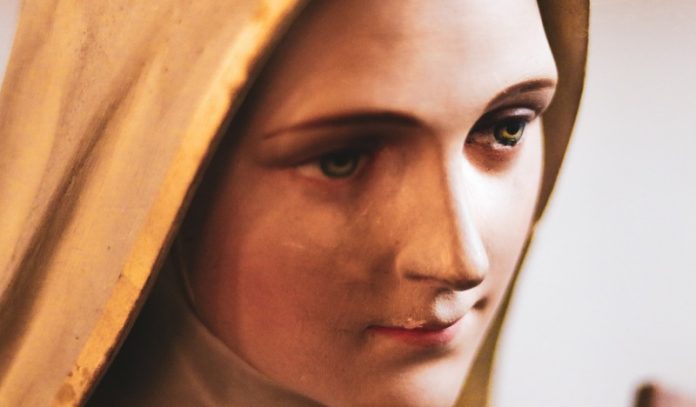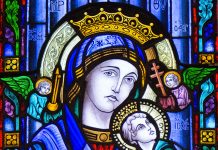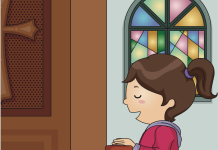
ANNE E. NEUBERGER
During May, the traditional month of Mary, we can give children an understanding of the Second Vatican Council’s teachings on the role of Mary in our lives. Then, in the spirit of unity and openness which the council generated, help children explore diverse ways in which people across the world know and honor Mary.
Mary and Vatican II
Lumen gentium, or Light to the Nations, is one of the council’s important documents. Chapter 8 focuses on Mary, reaffirming the Church’s special love of Mary because of her role in salvation history and her connection to Christ’s work. In child-friendly language, here are some of the main points. The bracketed numbers indicate where they are found in the document.
Mary is special to God and to us because:
- When the angel Gabriel told Mary God wanted her to become the mother of his Son, Mary said yes. She gave of her whole life and her love to do all this. And she brought God into the world. [53]
- Because of all this, Mary is called “Mother of God.” That’s an important name! [53] Because she is Jesus’ mother, our Church gives her a special honor, and only Jesus is given higher honor. [54]
- However, Mary is human. That means she is one of us and we can feel close to her too. [53]
- Mary was often working with Jesus, bringing people closer to God [58] [Teachers: a children’s book that makes this clear in illustrations, as well as Scripture, is Mary, the Mother of Jesus by Tomie de Paola).
- Mary is an important connection for people and Jesus. Jesus loves us and we should always talk (pray) to Mary too, asking her to help us feel close to Jesus. This is because she, as his mother, loves Jesus, and she is a loving mother to us too. [62]
Activities
Share these points with students. Then help them gain a new perspective on Mary’s importance to the world’s peoples with these activities.
Younger students
- Read the stories (on this page) with children; have them draw pictures based on them.
- Look at images from other apparition stories, especially Our Lady of Guadalupe, Kibeho, and Pontmain. Does she look the same? Why do you think she appears looking like the people who see her?
- Find places on a map where people have either seen Mary or have celebrations of her.
Older students
Read and discuss the Magnificat:
- Read its setting in Scripture in (Luke 1:46-55); compare it to 1 Samuel 2: 1-10.
- Invite students to interview two people of very different ages, and ask them how and what they learned about Mary as children.
Anne E. Neuberger is the author of All God’s Children, 42 Short and Joyful Stories for Kids and Help My Child to Learn to Love the Saints. See all of her work at www.anneneuberger.com.
This article was originally published in RTJ’s creative catechist April/May 2013.
Image suggestions: David Papillon, unsplash




